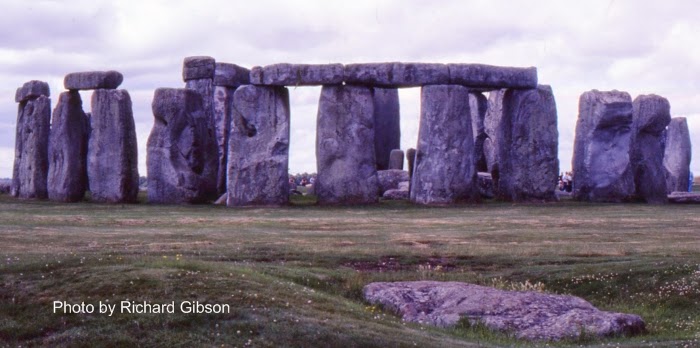When oceans close, and force island arcs, oceanic floor, and what ever else is out there to collide with continents, as happened in the Taconic Orogeny, there’s usually enough subduction or partial subduction that some materials reach temperatures and pressures at which they melt.
The molten rock generated by tectonic activity is what makes the volcanoes in a volcanic island arc – which might not be a string of islands; the Andes is a fine example of a volcanic arc related to subduction that is not islands.
Remember that we can have magma flowing on the surface as volcanic lava flows and ash falls, but we can also have molten material down inside the earth, never reaching the surface. We called such rocks plutonic the other day, because they form at depth, down in the realm of Pluto. They can also be injected through and between pre-existing rocks, cutting across them. Then, they’re called intrusive – a fairly straightforward word meaning that the magma, the molten material, is forced into other, solid rocks. Think of the neck of a volcano, or better, the deeper roots where magma is pushing here and there, wherever it can find a weak zone to send a narrow, vein-like shoot through. Those weak zones might be bedding planes in a sedimentary rock, and intrusive igneous rocks that are parallel to bedding in sedimentary rocks make a structure called a sill. If the igneous rocks cut across the older rocks, the feature is called a dike.
Dikes and sills were forming at depth during the Taconic Orogeny, on both sides of the closing ocean. On the side where parts of Great Britain were found, the microcontinent of Avalonia, the same thing was happening.
Some of the intrusive rocks there formed dikes made of dolerite. That’s the British term; Americans call it diabase, and it’s a fine-grained version of gabbro – or a coarse-grained version of basalt, depending on how you look at it. It’s the intermediate variety of those rocks that are relatively low in silica, as compared to silica-rich granite, and relatively rich in iron and magnesium.
After they were formed in the Ordovician mountain-building event about 450 million years ago, the dolerites of Wales sat there – tossed around by later tectonic activity, but still there, until erosion exposed them. Today, they crop out in the Preseli Hills of Wales, a bluish rock. By using careful geochemical analysis, those outcrops have now been identified as the source of the bluestones at Stonehenge, 250 miles away. The bluestones at Stonehenge are not all dolerite, and some 20 different rock types have been identified, but all are from the Ordovician outcrops in Wales. Some are volcanic equivalents of the dolerites, and the location they came from was not pinpointed until 2011. They’re from the same general area of the Preseli Hills in Pembrokeshire, in far southwestern Wales.
It isn’t clear whether the stones were transported from Pembrokeshire to the Salisbury Plain by the builders of Stonehenge, or by glacial movements thousands of years earlier.
—Richard I. Gibson
Photo by Richard Gibson
References and further reading:
The Earth Story’s nice essay with good links.
Another piece in Stonehenge rock source puzzle
Stonehenge mystery


No comments:
Post a Comment